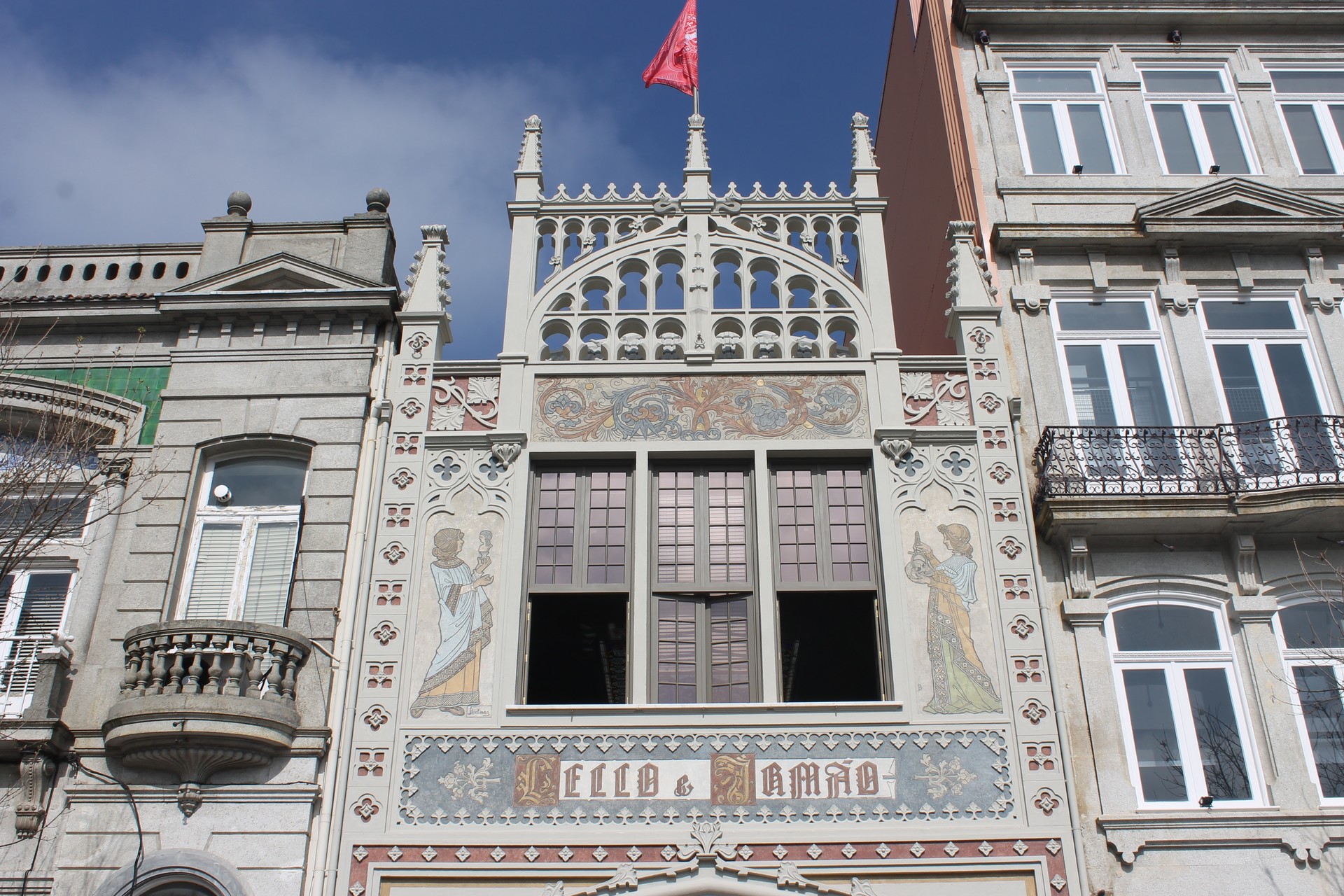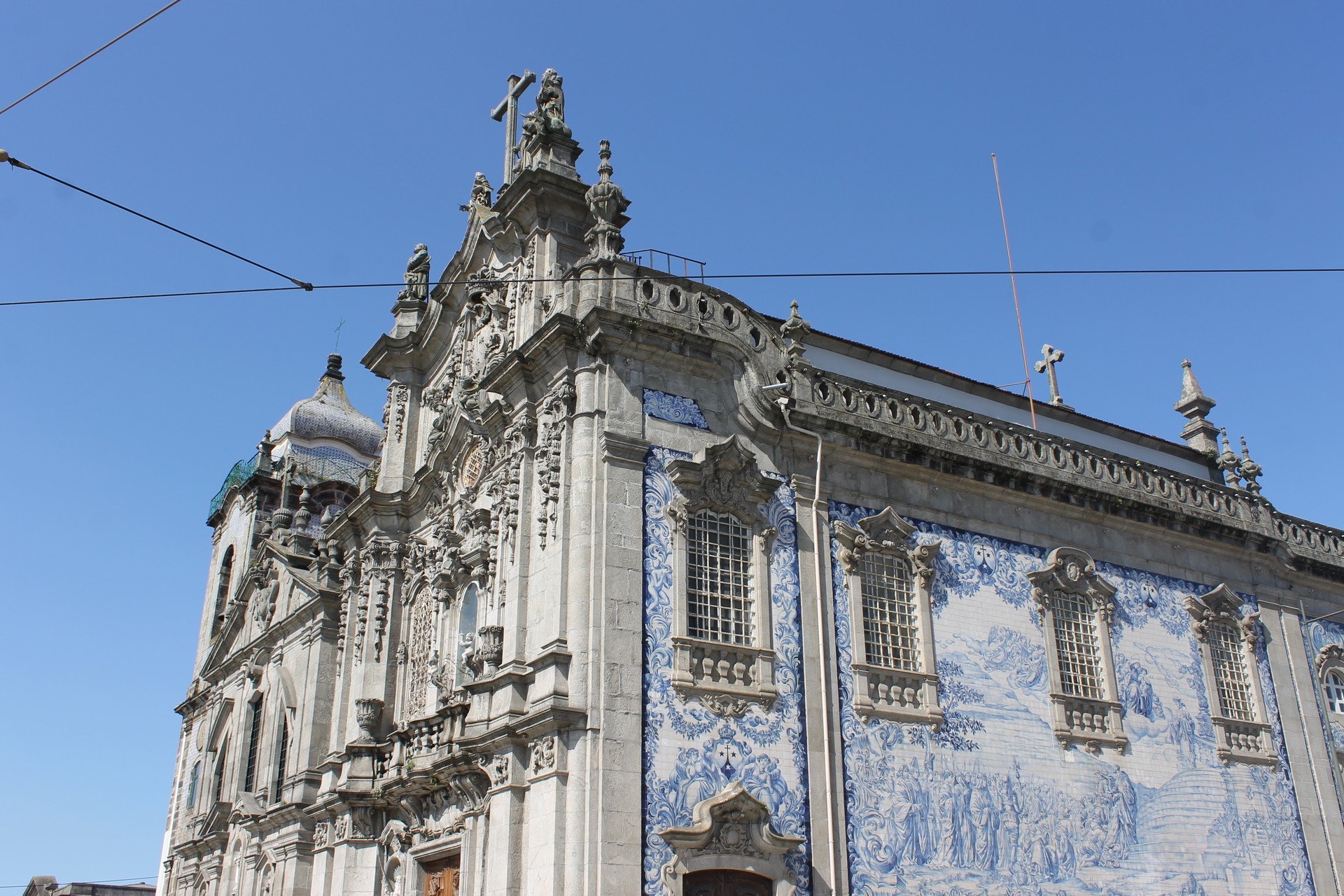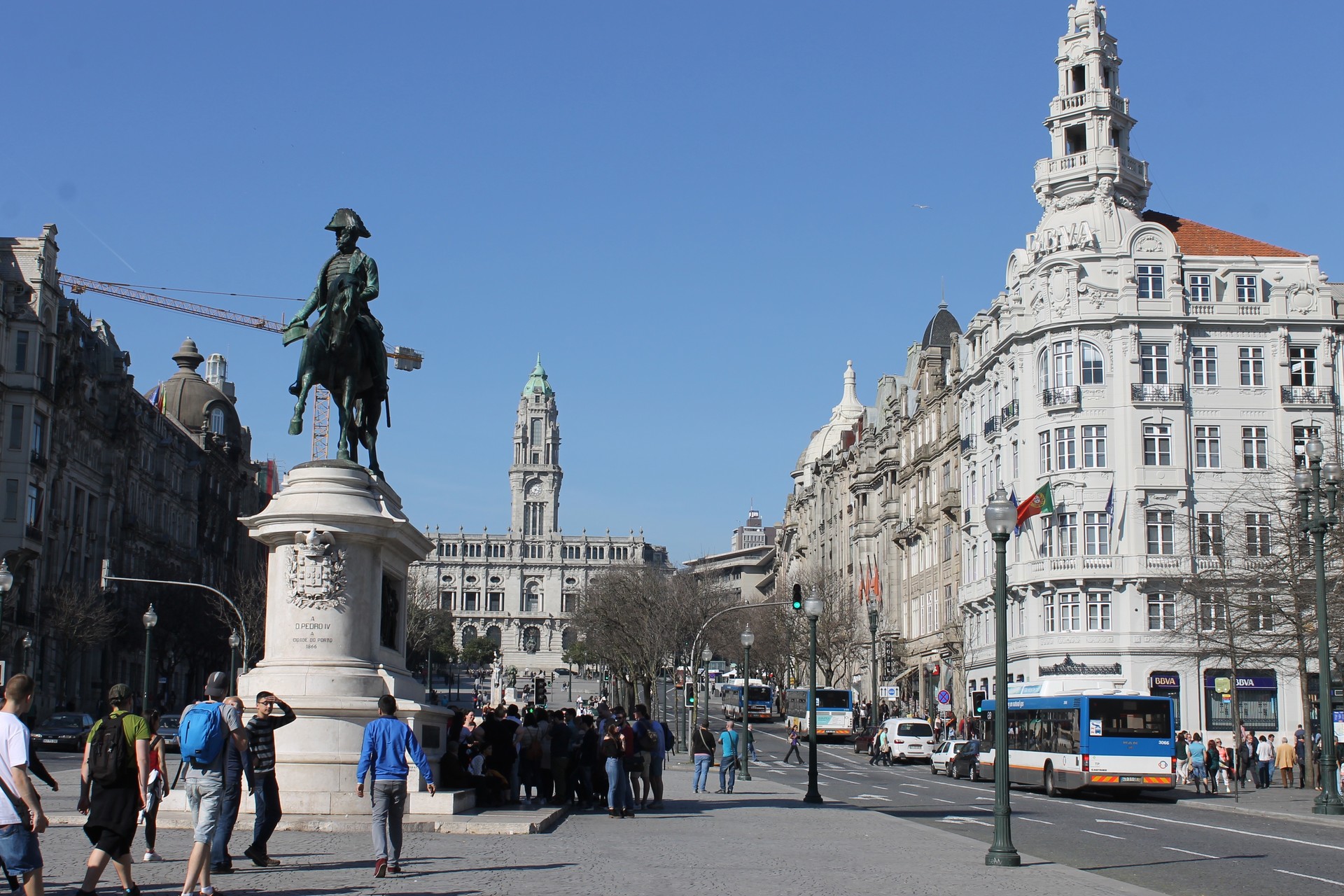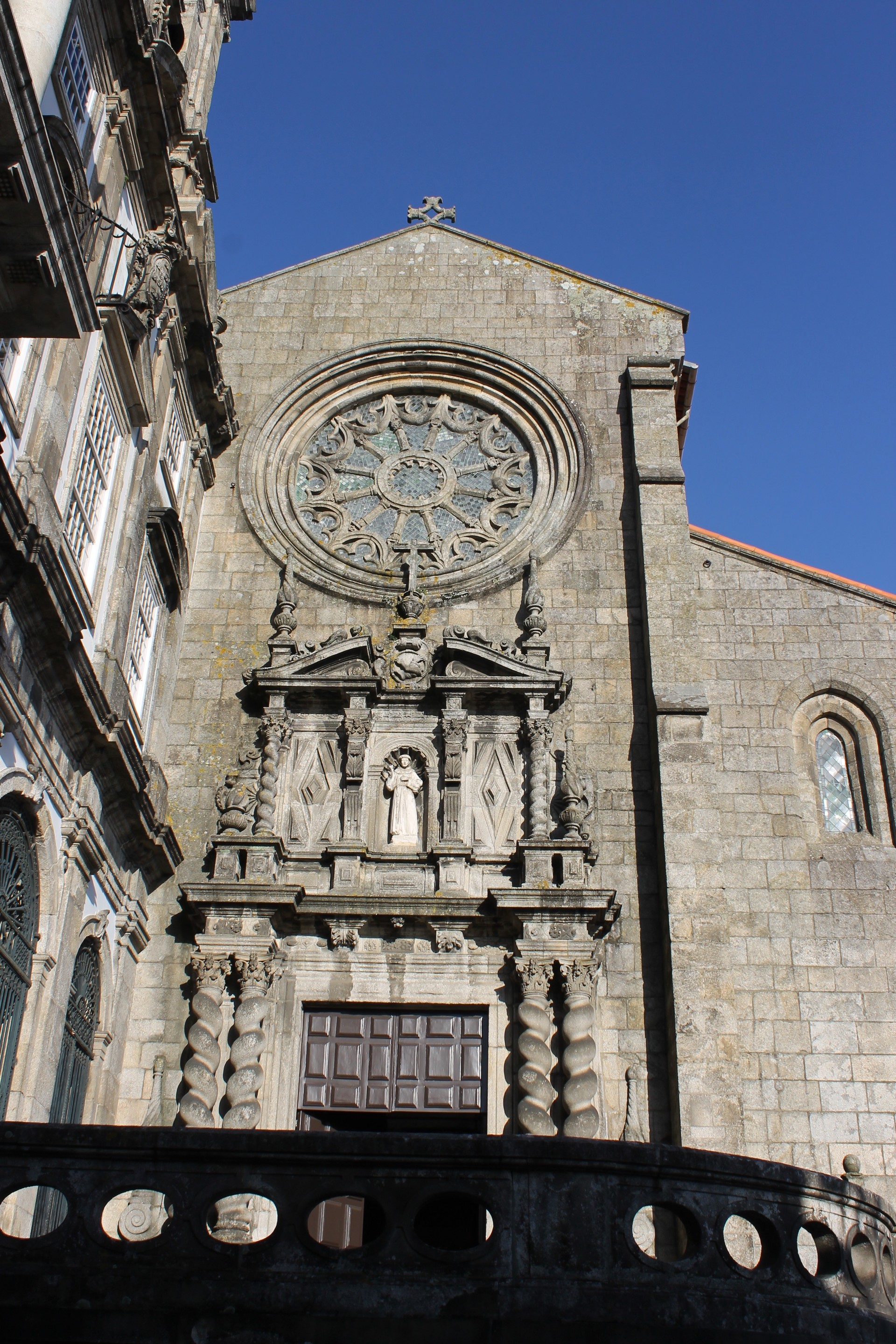Top 10 things to see in Oporto
Oporto is a beautiful little city filled with art, history and culture and of course all of it is worth discovering; however I put down the ten things that really stood out for me when I was in Oporto and that I think are worth giving priority to.
Rua das flores
Take a walk down Rua das Flores. In the whole city this road is considered to be one of the most beautiful ones. It was first opened in the sixteenth century with the name "Rua de Santa Catarina das Flores”, however only recently, in 2014 it has been renovated with the redecoration of the buildings and the opening of little boutiques and cafés along the street.
On this road you will find the Santa Casa da Misericórdia do Porto and the museum Museu de Marionetas do Porto. When walking down pay attention to the intricate details of each beautiful building, especially Ourivesaria das Flores, a little café located on this street. The exterior of the building is decorated with colourful flowers and the interior looks like a typical English teashop. Another place worth visiting is Nut; it serves everything with chocolate and Nutella, whether it’s crêpes, churros, croissants or pizza
Mercado Municipal de Bolhão
Located in Rua Formosa 214, this market has been open since 1914. it is the biggest food market of Oporto and you will find a wide variety of products such as fresh fruit and vegetables, flowers, meat and fish. Considering its long history, it is in this very space that you get a feel for the heart and soul of the city. Of course part of the market has become more modern but there are still some aspects that associate it to its traditional, antique state.
Opening Hours: Monday – Friday: 7. 00-17. 00 & Saturday: 7. 00-13. 00.
How to get here? You take the metro line A, B, C, E to Bolhão.
Livrairia Lello
The Livrairia Llello is the most beautiful bookshop in Portugal. It initially belonged to José Pinto de Sousa Lello and his brother in law. However the latter died soon after and therefore José decided to start a partnership with his younger brother Antonio. They opened their bookshop in Rua das Carmelitas in 1906, designed by Francisco Xavier Esteves. The building today is of neo-gothic architecture with two figures painted on either side of the windows. These two figures are a representation of Art and Science. The interior of the library is fascinating, with a beautiful, brown wooden staircase with detailed balusters leading to the top floor of the library. Incredibly organized, this library was frequented by JK Rowling. Today they sell a wide range of books from every genre imaginable so go in and explore the world of literature. Tickets cost around 5 euros.

Opening Hours: Monday – Friday 10. 00-19. 30 & Saturday – Sunday 10. 00-19. 00.
Enter the Estaçao de Porto-São Bento
The Estaçao de Porto-São Bento is the main train station of the city. In my eyes, after the Grand Central Station this is the most beautiful station I have ever seen. It is a spacious room beautifully architected by Marques da Silva in the twentieth century with the walls covered in white and blue azulejo tiles picturing historical representations of the incredible painter Jorge Colaço. These works of art are a representation of landscapes and important historical events such as the Battle of Valdevez of 1140, the arrival of King John I and Philippa of Lancaster in the city in 1387 and the Conquest of Ceuta of 1415.
La Igreja das Carmelitas
This church and its “brother” Igreja do Carmo are two churches you really must see in Oporto. The fact that they are practically adjacent one another means that you can compare the difference in style between the one church built in 1616 and the second one in 1768. The Igreja das Carmelitas Descalços is located on the left-hand side of this house and It is a seventeenth century building that used to belong to the Carmelite nuns. It was built in 1616 and its façade was consequently completed in 1628.Between the two churches it is less detailed, with a classical granite façade and a single bell tower on the left covered in azulejos; the traditional, Portuguese blue and white tiles. The interior of this church however is more complex; there is a single nave with six side chapels each individually decorated. The white ceiling provides beautiful lighting for the church and the golden details add a beautiful touch to the building. It is a prime example of late baroque / Rococo architecture.
Admission: Free Entry.
Igreja do Carmo
The Igreja do Carmo is one of the most eye catching and architecturally pleasing church of Oporto. It is an example of Rococo architecture, a French 18thcentury artistic movement and style that encompasses intricate and graceful approach in terms of interior decoration, design and art. The late baroque façade coupled with the traditional, Portuguese azulejos create a beautifully ornamented church. The church itself was initially built in the mid-eighteenth century and the blue and white tiles were recently added in the twentieth century. These azulejos are artistic representations of events from the founding of the Carmelite order and Mount Carmel.
The interior of the church is composed by a single nave and It contains numerous oil paintings and gold ornaments. The seven intricate altars are the works of Francisco Pereira Campanha, a remarkable Portuguese sculptor.

Admission: Free entry.
La Ribeira
The Ribeira is the most characteristic and lively area of Porto. In this area you will find the Ribeira Square, which was declared a World Heritage Site of the UNESCO. It is home to little bars and restaurants you can sit and enjoy the view whilst having a bite to eat. The Ribeira also encompasses the riverside, with beautiful colourful houses and markets running alongside the Douro River. Historically this area was very important for commercial purposes, nowadays it is a prominent touristic location. Come here to discover the real heart and soul of Oporto.
Praça da Libertade
Praça da Liberdade is one of the most important and influential squares of the city. If you really want to get a feel for the historical influence of the nineteenth century in Porto, then this is what you must see. The oldest building of the square is a convent that was built towards the end of the eighteenth century by the religious order of Saint Eligius. Furthermore in 1829 the square became the place where liberals were hanged. It is also the square where Portugal was proclaimed as a republic. The square is also home to the statue dedicated to King Dom Pedro IV, the first ruler of Brazil who also briefly reigned over Portugal. In 1916, the city council erected it’s building at the north side of the square augmenting the importance of this location. All of these important events make of this square a place of history and culture. The long avenue connecting the north and south of the square is called Avenida dos Aliados. This avenue takes its name from an alliance formed between England and Portugal in the fourteenth century.

Museu Nacional de Soares dos Reis
This fine-arts museum was founded in 1833 and is Portugal’s first public art museum. It is the place where all of the important property that was confiscated from the Portuguese monasteries have been preserved. This property includes objects such as ceramics, sculptures, jewellery, furniture, paintings, glassware and textiles. In this museum you also get a feel for Portugal’s heritage, as it each object represents almost two centuries of history.
Opening hours:
Wednesday – Sunday 10. 00-18. 00 & Tuesday from 14. 00-18. 00.
Igreja de São Francisco
This church was first built in the thirteenth century only to be completed in 1425. However, similarly to the other churches in Oporto, it was reconstructed in the late seventeenth to the early eighteenth century in late baroque style, replacing the previous gothic influence. The interior of the church is composed of three aisles embellished with golden objects such as animals, fruits, birds and floral motives. The intricate detailing of the interior woodwork are the works of several Portuguese wood carvers. These rich details cover almost the entire church ceiling. I would definitely recommend visiting the interior of the church even though you are not allowed to take any photos! If you have time then I would also suggest you buying a combined ticket, which allows you entry to the museum. The museum holds paintings, objects and catacombs relating to the history of religion in Portugal throughout the centuries.

Photo gallery
Content available in other languages
Want to have your own Erasmus blog?
If you are experiencing living abroad, you're an avid traveller or want to promote the city where you live... create your own blog and share your adventures!
I want to create my Erasmus blog! →



















Comments (0 comments)